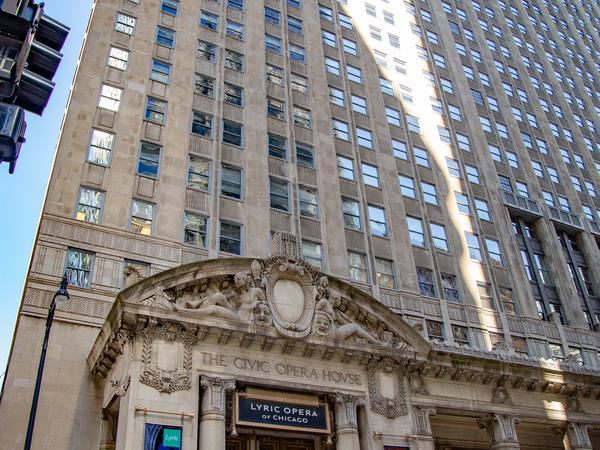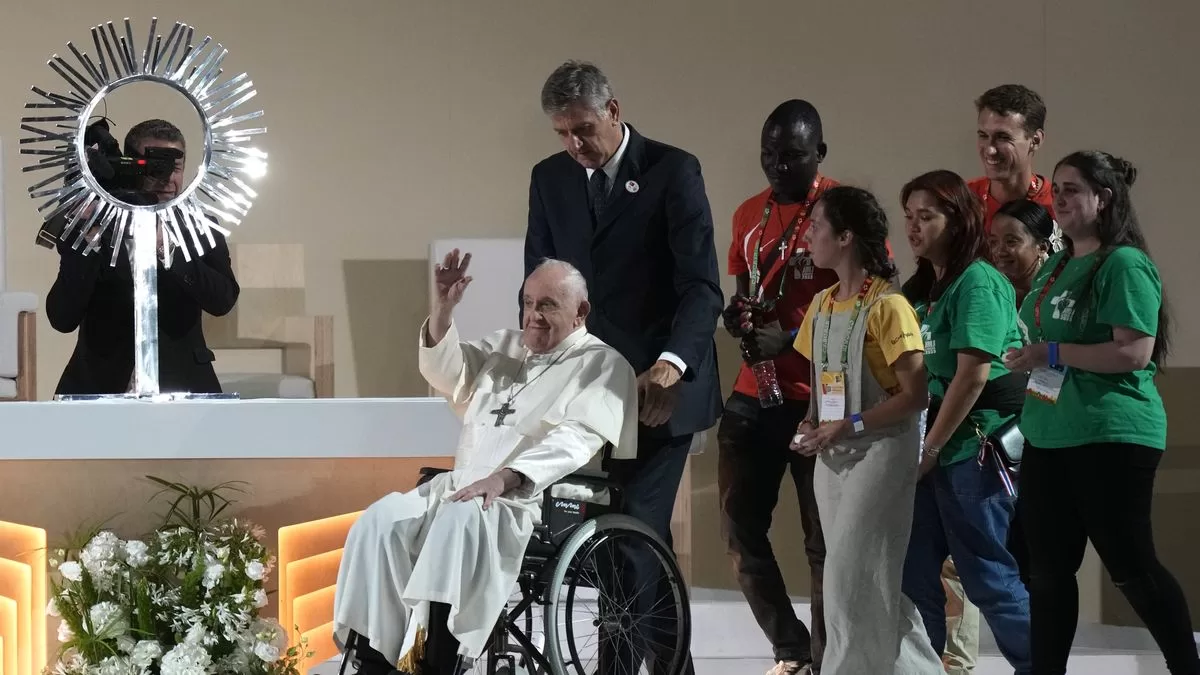Chicago is the third largest city in the USA, the metropolis on Lake Michigan is famous for its breathtaking modern architecture. The Lyric Opera of Chicago resides in a 45-story high-rise building from 1929, the impressive art deco hall has 3500 seats.
In the foyer, “Don Carlos” surprises a diverse audience, because young and old, urban and rural mix. Loudly dressed fashion victims meet gnarly farmer types, sequined outfits form a striking contrast to casual hoodies. And the tendency towards excessive air conditioning defies even the severe outside temperatures, so it’s a good idea to take your coat into the hall.
Blazing passion in the ice-cold hall
“It’s pointless to discuss it,” explains Enrique Mazzola at lunch and warns: “I’m always cold there.” When he enters the orchestra pit, hearty applause breaks out in the hall, which is about 85 percent full. Verdi’s “Don Carlos” can be seen in a production by David McVicar that was created for the Frankfurt Opera in 2007. Robert Jones’ white uniform stage design offers little visual appeal for the static events. What counts here is above all the musical quality, and it’s worth listening to: Mazzola conducts the often extremely heavy work consistently from the spirit of the French Grand Opéra.
This is also reflected in the slim cast: Joshua Guerrero even sings the title role with a touch of a light tenor, but with passion and pressure, Rachel Willis-Sørenson is a lyrically blossoming Elisabeth, Clementine Margaine is a blazing Eboli, and Igor Golovatenko is outstanding as Posa compelling legato. A song festival.
Which is increased with Rossini’s “Le Comte Ory”. Mazzola is again in a ditch and in Bartlett Sher’s lively production maneuvers an enormously agile ensemble through the pitfalls of the highly virtuosic score. Star tenor Lawrence Brownlee is undisputedly at the top in the title role with fearless coloratura fluency and safe playing. It’s hard to do better than that.

For Enrique Mazzola, Chicago is just the right city to conquer America. “The frantic rhythm of life here isn’t the same as in New York. We are in the Midwest, the people are very friendly, I feel a great warmth. And Chicagoans are proud of their culture, which they finance themselves, don’t forget that! So social life is very important in Chicago. It’s always about networking, about finding new sponsors.”
When asked about the structure of the audience, Mazzola confirms the first impression: “The entire social structure here is not so much divided into classes but more into communities: There is an Afro-American community, an Asian one, a Polish one and many others.”

The Afro-American community in particular is intended to be addressed with operas such as “Dead Man Walking” by Jake Heggie. Mazzola is convinced that it is “a new wave” of African-American operas that use jazz and blues influences and could thus unite a traditional audience with communities that would otherwise not have access to opera. “Here, people really like that American approach.”
Cautiously forward towards modernity
In order to arrive fully in the city, Mazzola lives right in the middle, on the 55th floor of the John Hancock Center with a view of the lake. He takes the bus to the opera house. “No one here can understand that, it is probably also a very European idea. But I need this contact with the reality of the city.”
Part of the contradictory reality is that the diverse audience is most likely to agree on conservative tastes, as Mazzola confirms: “There are actually very modern people here, they love contemporary art, and not just in the museums. When you visit the people you only see design furniture and contemporary art on the wall. But in opera they want to see these conservative things.”
Mazzola dreams of a gentle change in taste, wants to “develop rather than change, that would be arrogant.” And has made the first attempts: “We had Barrie Kosky’s ‘Magic Flute’ as a guest, about 70 percent loved it in the premiere, but 30 percent hated it . And from the second performance we had a new audience that was curious. The next Kosky production ‘The Fiddler on the Roof’ was sold out across the board”.
Mazzola can imagine further attempts with directors who offer strong directing styles “without breaking all the rules”. And when it comes to diversity, he doesn’t fool himself: “It will definitely take a long time to achieve a real mix of audiences. We’re at the beginning of a long process,” he admits, “but we’re getting started!”

